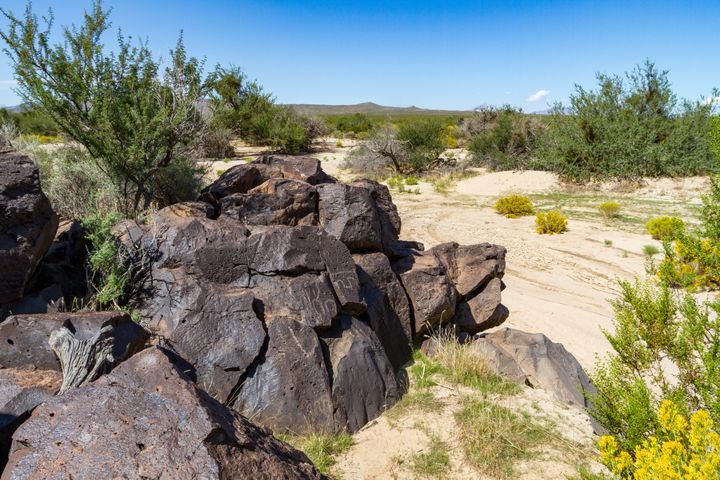Possibly one of the most well-known backcountry cabins in the Mojave National Preserve is Riley's Camp.
History
John Riley Bembry was born on February 5, 1899, in Arapaho, Oklahoma. He preferred to be called Riley instead of John because he found it more distinctive. After serving in World War I as a medic, he moved to the Ivanpah Mountain region of the Mojave Desert in the late 1920s to pursue mining. He learned mining techniques and geology from his neighbor Bob Geer, who lived at nearby Geer Camp.
Around 1935, Bembry established Riley's Camp on BLM land in a beautiful Joshua tree and juniper woodland with granite outcrops and stunning views. The camp comprises a cabin, an outhouse, a cold storage, an assay office, and a cactus garden. The region is home to Joshua trees, junipers, and a diverse range of cacti species.
In 1947, he married Lorraine Purcell of Cima. Together, they raised one daughter, Loretta, in addition to Lorraine's young sons, Chet and Bob, from a previous marriage.
Bembry was known for his extensive mining knowledge, having acquired skills with explosives during WWI. Over the past 50+ years, he staked over 60 mining claims in the area, including the Evening Star, New Era, Standard No. 1, and Morning Star mines. He was also reported to have mentored other miners and hosted social gatherings at the camp. One can only imagine what went on here.
He divorced Lorraine in 1960 and lived permanently at Riley's Camp until he died in 1984. His mining claims passed to his daughter.
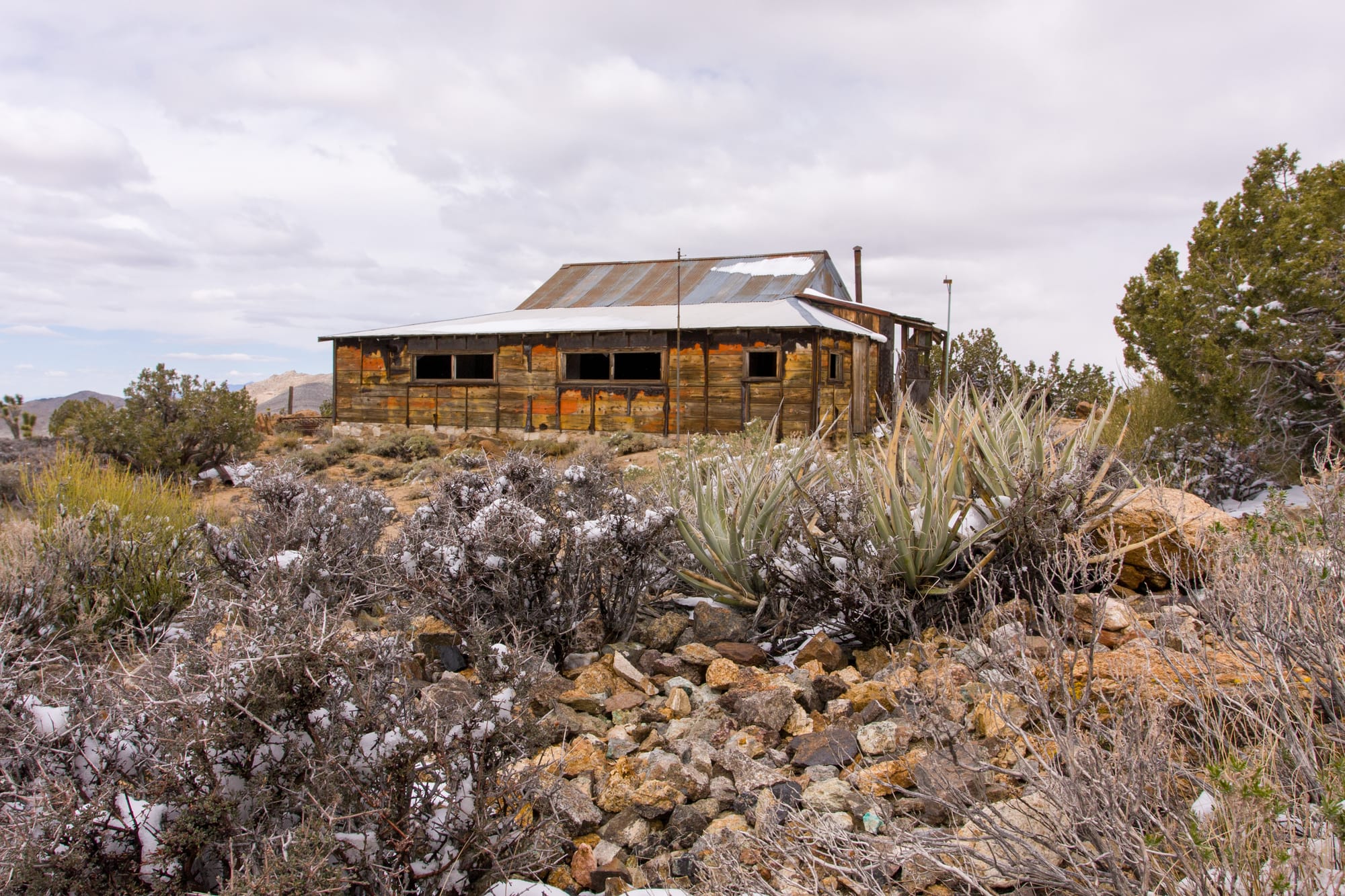
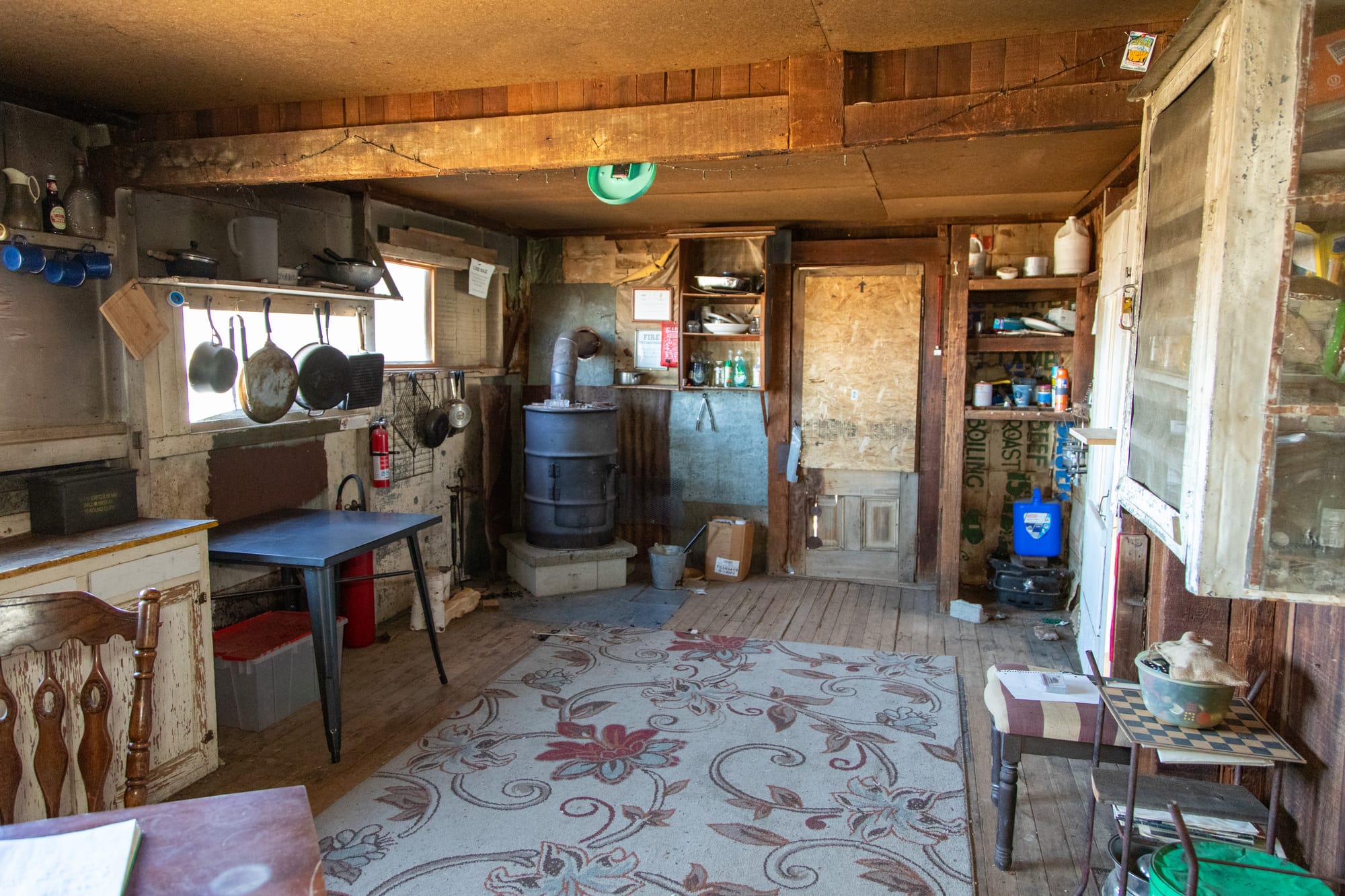

Riley's Camp
Bembry's most enduring legacy is the Mojave Cross war memorial, which he helped erect in 1934 on Sunrise Rock on Cima Road. He always kept a watchful eye on the cross and replaced it when vandalized. After much controversy over its placement on public land, the NPS swapped the land to private ownership in 2012, allowing the memorial to remain.
Volunteers and NPS staff have restored and maintained the cabin at Riley's Camp. You are welcome to spend the night in the cabin on a first-come, first-served basis as long as you respect the place. Please keep it clean and leave it better than you found it. Follow Backcountry Cabin Etiquette while you are there.
I've been visiting Riley's Camp since 2006, and my photos are of various trips over the years.
Riley is buried in a small cemetery down in the flat below the camp. To visit it, backtrack 1.5 miles from camp and turn north onto unmarked Kessler Peak Road. The graves are 0.6 miles on this graded dirt road.
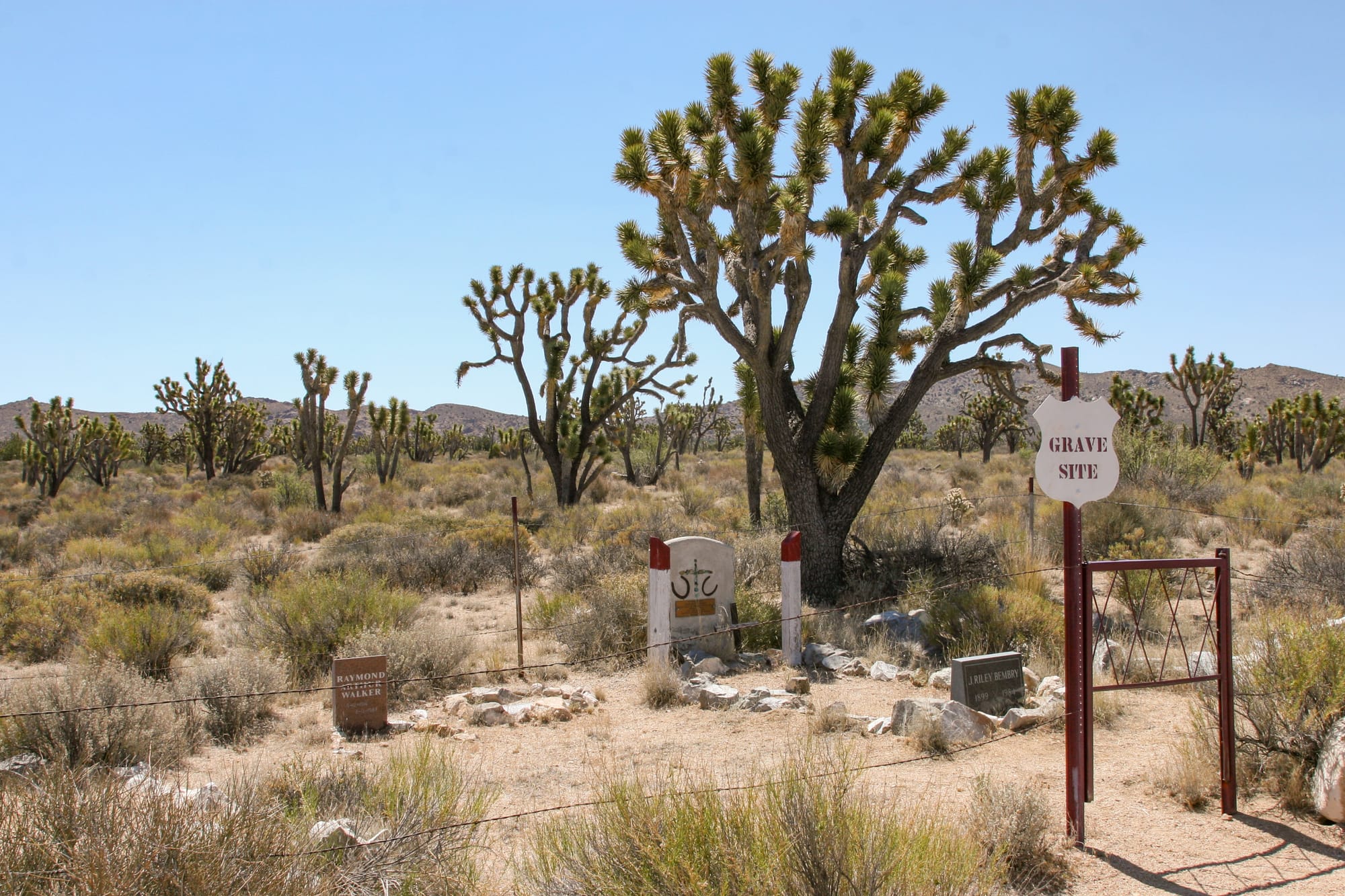
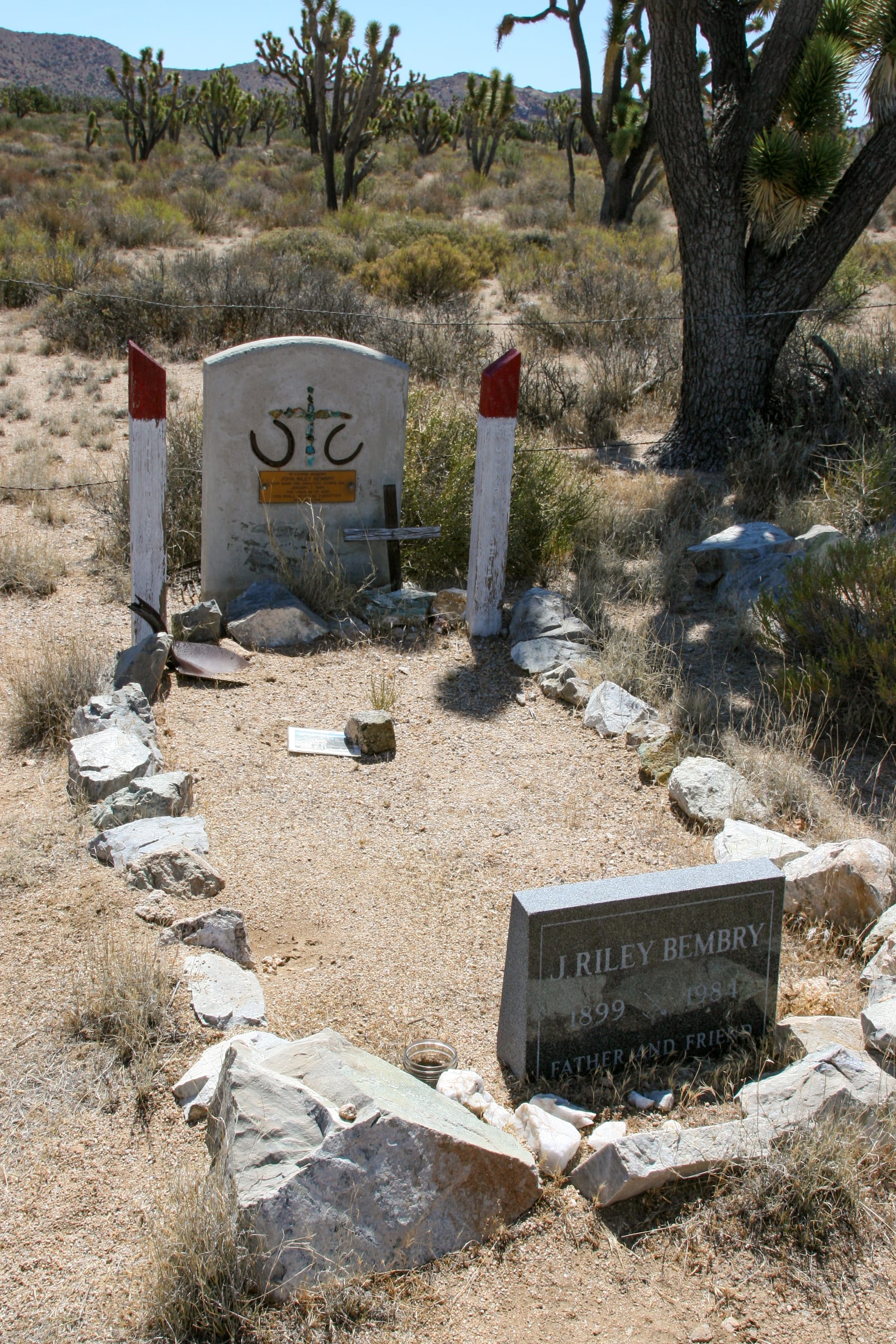
Cemetery in 2006



